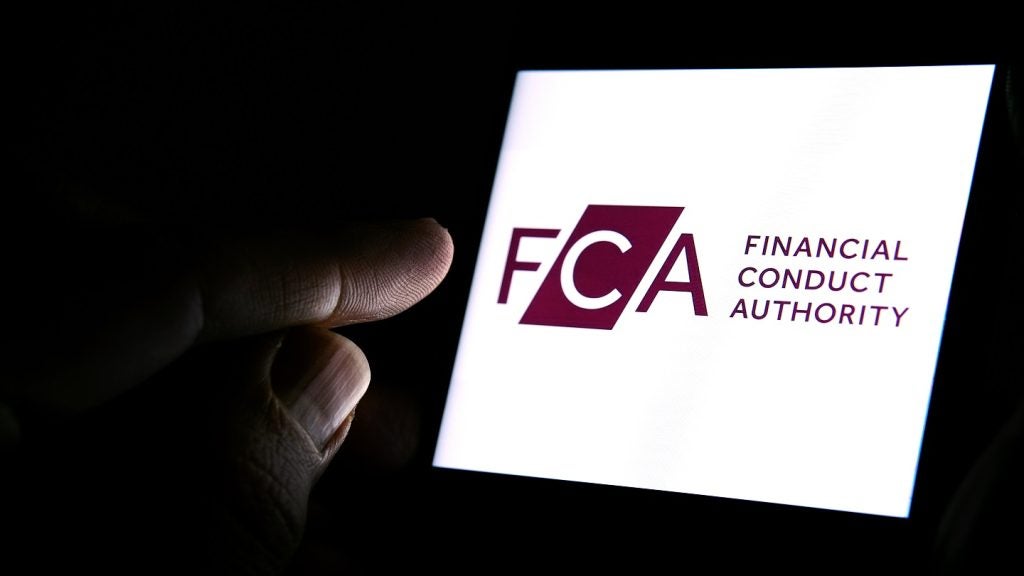Dealers need to be aware of the law relating to
satisfactory quality and to understand how they should collaborate
with finance companies to avoid litigation and retain customers,
say Greg Standing and David Bowden.
Satisfactory quality
 The Sale of Goods Act implies certain terms into all sale
The Sale of Goods Act implies certain terms into all sale
contracts, one of which is that goods will be of satisfactory
quality. Under section 14 (2A), the test is objective: goods must
meet the standard that a reasonable person would regard as
satisfactory, taking into account any description, the price and
‘all other relevant circumstances’.
Under section 14 (2B), the quality
of goods is said to include their state and condition, and that the
following are aspects of quality: fitness for purpose supplied;
appearance and finish; freedom from minor defects; safety; and
durability.
Under section 14 (2C), the implied
term does not apply to any matter drawn to the buyer’s attention
before the purchase, or where a prior examination ought to have
revealed the defect.
How well do you really know your competitors?
Access the most comprehensive Company Profiles on the market, powered by GlobalData. Save hours of research. Gain competitive edge.

Thank you!
Your download email will arrive shortly
Not ready to buy yet? Download a free sample
We are confident about the unique quality of our Company Profiles. However, we want you to make the most beneficial decision for your business, so we offer a free sample that you can download by submitting the below form
By GlobalDataThe Court of Appeal in Rogers
vs Parish said that, in relation to a car, it is not simply a
matter of it being driven from A to B, but doing so with the
appropriate degree of comfort, ease of handling and pride in the
car’s inward and outward appearance.
Where vehicles are supplied on
finance, the only contract of sale is that between the dealer and
the finance company (which will contain the implied terms). The
finance agreement is not a contract of sale. Therefore section 10
of the Supply of Goods (Implied Terms) Act 1973 incorporates the
implied terms as to satisfactory quality into HP agreements; and s9
of the Supply of Goods and Services Act 1982 incorporates it into
lease agreements.
Finance customers are therefore in
the same position as if they were buyers under a sale contract,
albeit their contracts are with the finance company. Therefore, in
the event of a problem, their right of redress is with the finance
company. In turn, the finance company has a right of redress
against the dealer.
This is why customers, dealers and
finance companies can very easily find themselves caught up in
three-way litigation. In such cases, the cumulative costs can
quickly become disproportionate to the issues in hand – and so it’s
important that early and appropriate action is taken to nip
problems in the bud.
If customers are unhappy with the
vehicle, they will very often return it to the supplying dealer and
we advise dealers to act promptly to resolve any issues.
The right to
reject
 If customers remain dissatisfied, they may seek to reject
If customers remain dissatisfied, they may seek to reject
the vehicle, terminate the finance agreement and claim the
instalments back, together with damages for loss and inconvenience.
And, as the contract is with the finance company, such a rejection
must be directed to the finance company. The right to reject the
vehicle may be lost if customers are deemed to have affirmed the
finance agreement by electing to continue with the agreement in the
full knowledge of their right to reject and all the relevant
facts.
The principle of rejection is best
demonstrated by the Court of Appeal case of Clegg vs
Andersson (2003). Clegg bought a yacht for £236,000, but was
told on delivery that the keel was too heavy. Clegg sailed it for
eight days.
Following six months of discussions
with the dealer, Clegg was advised that some lead needed to be
shaved off the keel to remedy the defect for the relatively cheap
sum of £2,000.
After considering his position for
20 days, Clegg rejected it.
The Court of Appeal confirmed Clegg
was entitled to do so, stating that the question is not whether the
rejection was reasonable, but whether the right to reject had been
lost. Time does not start running until customers have all the
information they
reasonably require to make an informed decision on whether they
want to keep the goods.
This principle should be borne in
mind when dealing with vehicles with undiagnosed intermittent
faults that require the vehicle to be returned on several occasions
to the dealer.
Although many months and years can
pass, and many miles can be clocked up
in-between, customers are unlikely to have affirmed their finance
agreement until the issue is diagnosed, enabling them to make an
informed decision on whether they wish the repair to be carried
out.
Indeed, in one county court
decision, a customer was entitled to reject a car five years after
delivery because of a consistently leaking roof. Following
Clegg, where the vehicle is supplied new, the fact that
the repair may be very minor and inexpensive (and perhaps covered
by a warranty) will be irrelevant.
In most cases where a fault is
established, the customer is not obliged to have the repair done
and may reject it. Clegg changed the law and overruled old
authorities and dealers and finance companies have generally been
slow to recognising this and act accordingly.
Satisfactory quality – compare
and contrast
Whether a vehicle is of
satisfactory quality will depend on the price and all relevant
circumstances. The merest blemish on a new Rolls Royce may make it
unsatisfactory, but it might not do so on a more humble car.
The issue is rarely black and white
and outcomes of court cases may depend on getting a good
 judge on the right day. This is another
judge on the right day. This is another
reason why dealers and finance companies should collaborate early
to resolve cases rather than taking their chances in the lottery
that can be the county court. To demonstrate the point, compare and
contrast the following two cases:
In Egan vs Motor Services
(Bath) (2007), Egan acquired an Audi TT which he rejected
because it veered to the left on roads with a left-hand camber. The
dealer argued and presented evidence that the car was within the
manufacturer’s tolerances and specification. The Court of Appeal
held that the
sensitivity to the camber of the road was normal in this type of
car and was a feature of it, rather than a defect rendering it of
unsatisfactory quality.
In Garside vs Black Horse
(2010), Garside rejected an Aston Martin Vanquish she had purchased
new on finance for £170,000 on the basis that the view through the
rear windscreen was distorted.
The dealer and finance company
argued that although the curvature of the glass of the rear
windscreen, which was necessary to achieve the Aston’s distinctive
and desirable shape, did cause some distortion, that this was a
characteristic of the car and not a defect.
However, having taken the vehicle
out for a test drive during the trial to see for himself, the judge
decided that it did render the car of unsatisfactory quality. He
remarked that the price paid was “a huge sum of money which would
buy a three-bedroom house” and, as such, Garside was entitled to
expect it to be nearly perfect.
Prior to purchase, Garside had sat
in an identical vehicle and it was argued that he ought to have
noticed the distortion. The judge dismissed this argument on the
basis that he did not inspect the actual vehicle that was the
subject of the finance agreement.
If that’s right, we submit that a
s14 (2C) exclusion can never apply to any pre-ordered new car,
unless an issue is specifically drawn to the attention of the buyer
beforehand – food for thought for dealers.
There’s no doubt that where a
high-quality vehicle is purchased new, the courts are very willing
to find in favour of the customer, even for the slightest
problems.
In Lamarra vs Capital Bank
(2006), a new Range Rover had several minor defects upon delivery,
including the front wheels being incorrectly balanced, road noise
speed emanating from the drive system, a scratch on the ashtray
cover, a misaligned glove box and some paintwork blemishes.
The dealer offered to resolve all
complaints and to pay for them (and argued, in any event, that the
repairs were covered by warranty). On appeal, the court found that
appearance and freedom from minor defects were central to the
definition of quality and that Lamarra was entitled to receive a
car without any defects given the amount of money he’d paid for
it.
On the other hand, where the same
vehicle is supplied second-hand, the level of expectation is not so
high.
For example, in Ansher vs
Capital Bank, an unreported county court decision in which
Wragge & Co acted for the finance company, a second-hand Range
Rover
purchased on finance had a number of minor problems and an
intermittent fault that was eventually diagnosed as a faulty body
control unit.
A claim that the vehicle was of
unsatisfactory quality failed on the basis that the body control
unit was easily and cheaply repairable, with the result that the
defect would be cured immediately. It was also held that the
vehicle had not been validly rejected on the basis that it took
place some 15 months after delivery and that the Anshers had driven
another 9,000 miles after the purported rejection, thereby
affirming the finance agreement.
Some guiding
principles
Although the outcome of cases can
clearly never be guaranteed, there are some clear themes that
emerge from case law that should be used as guiding principles by
dealers and finance companies alike.
It’s important that dealers, in
particular, understand that where vehicles are supplied new, the
customer is entitled to a car that is perfect or nearly so. Even if
there are minor issues, the customer will most likely be
entitled to reject it, even if that seems unreasonable.
Dealers often act quickly and
sensibly to ensure that minor defects are remedied, thereby
retaining the goodwill of the customer, but that’s not always
so.
In many cases we see, the dealer
has lost sight of the fact that the customer has a legal
entitlement to reject the vehicle and is often not obliged to
accept a repair.
If such instances are dealt with
properly, there remains a good chance of supplying an alternative
vehicle and retaining the customer – a ‘win-win’ situation for all
parties.
Dealers also tend to lose sight of
the fact that the finance company is entitled to claim an indemnity
from it for all losses suffered by the finance company as a result
of a rejection (including legal costs). What starts life as a
simple issue to remedy can quickly turn into an expensive lesson
for a dealer, and there is a clear incentive for dealers
to resolve issues before solicitors are instructed.
Likewise, finance companies,
perhaps also conscious of obligations to treat
customers fairly, should ensure that they have demonstrably taken
reasonable steps to resolve complaints before a complaint is
escalated to the Financial Ombudsman or the courts. Mediation
should also be considered. Providing a forum for customers to vent
their frustrations can very often unlock a settlement.
In borderline cases, all three
parties should consider instructing a joint expert as early as
possible to obtain guidance on whether the vehicle meets the
standard to be reasonably expected – and possibly to agree to abide
by its findings. There is often little point in fighting cases
where the expert evidence supports the customer.
Greg Standing is a partner in
Wragge & Co’s motor finance litigation team and David Bowden is
a senior litigation lawyer at Black Horse.







